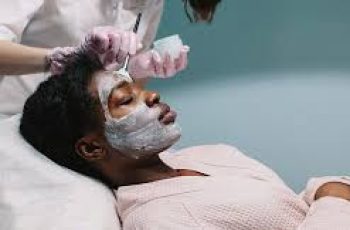
Artemisia capillaris extract comes from a shrub found abundantly in Asia that has been used as a diuretic, to protect the liver, and to treat skin inflammation.[i],[ii] It has recently been found to be one of the best skin care ingredients to put in melasma creams. What are the benefits and is it safe? That depends on your skin type! Find out if “wormwood” extract is right for your skin type with our free quiz!
Anti-inflammatory, antioxidant, tyrosinase inhibiting and moisturizing properties
AKA “Wormwood” a species native to south Asia.
Not common in skin care yet, but increasingly popular.
What is Artemisia Capillaris?
Artemisia Capillaris is a perennial plant with extract that is becoming popular in skin care. There are over 500 species of the genus Artemisia (of the Astraceae or Compositae family) dispersed throughout the temperate areas of Asia, Europe, and North America.[iii] Various parts of A. capillaris have been used in traditional medicine in Asia for hundreds of years.
If you’re just looking for the best products with artemisia capillaris, here are my favorites:
Active compounds in artemisia capillaris
Flavonoids (e.g., quercetin, luteolin) : These phenolic compounds express strong antioxidant properties, protecting the skin from free radicals and inflammation.
Unique compounds (e.g., capillin, capillene) : These oils have antimicrobial and anti-inflammatory benefits, soothing irritated skin and reducing acne causing bacteria.
Coumarins (e.g., esculetin) : Coumarins stimulate collagen production and inhibit tyrosinase, an enzyme involved in melanin production.
Phenolic acids (e.g., caffeic acid) : These acids have antioxidant properties and anti-inflammatory benefits. They’re also good for soothing redness.
Polysaccharides : They offer moisturizing properties, improving skin hydration and barrier function.
Triterpenoids (e.g., ursolic acid) : These compounds have anti-inflammatory and anti-aging effects, promoting collagen production and improving skin elasticity.
Fatty acids (e.g., linoleic acid) : Essential for maintaining the skin’s lipid barrier, they help in retaining moisture and protecting against environmental factors like pollution, dirt, etc.
Artemisia capillaris benefits
The various compounds in artemisia capillaris make it useful for conditions like:
Dry skin
Eczema
Melasma – it can block pigmentation and inflammation and therefore can act against this pigmentary disorder.
Psoriasis
Rosacea
Skin Aging
Source of Artemisia Capillaris in Skin Care:
Various parts of the shrub Artemisia capillaris (of the Astraceae or Compositae family) native to China, Japan, and Korea, have been used in traditional medicine for hundreds of years.[v],[vi],[vii] Organic forms are likely available.
Safety Issues and Clean Ingredient Standards for Artemisia Capillaris
Artemisia capillaris is generally recognized as safe (GRAS). There are no clean ingredient standards that exclude A. capillaris.
The CIR (Cosmetic Ingredient Review Panel) has graded Artemisia Capillaris (AKA Wormwood) “safe” in skin care formulations.
Environmental impact
Artemisia Capillaris is a sustainable ingredient for use in skin care products. It does not have any particular or unique side-effects on the environment. It does not take a lot of water to grow mugwort and it is fast growing.
Studies on Artemisia Capillaris
Artemisia capillaris limits the expression of tyrosinase-related protein 1 (TYRP-1), which is structurally comparable to tyrosinase. TYRP-1 is involved in eumelanin (the most common form of melanin, including brown and black) synthesis, but not in pheomelanin (responsible for yellowish to reddish tints) synthesis. TYRP-1 is being looked at as a target for treatment of hyperpigmentation disorders such as melasma; therefore, A. capillaris is considered attractive for use in skin-lightening products.
In a 2022 study, A. capillaris was among four essential oil extracts (of 10 studies) to suppress the development of melanin in a B16F10 cell line model.[xiv] Six years earlier, the A. capillaris constituent 4,5-O-dicaffeoylquinic acid significantly and dose-dependently reduced melanin production and tyrosinase activity in melanocytes and decreased the expression of TYRP-1 in mouse cultured cells.[xv]
Conclusion
Artemisia capillaris has long been used in traditional medicine in Asia. It appears to have potential in skin care creams or other products to treat dry skin, eczema, psoriasis, rosacea, melasma, and sensitive skin.


